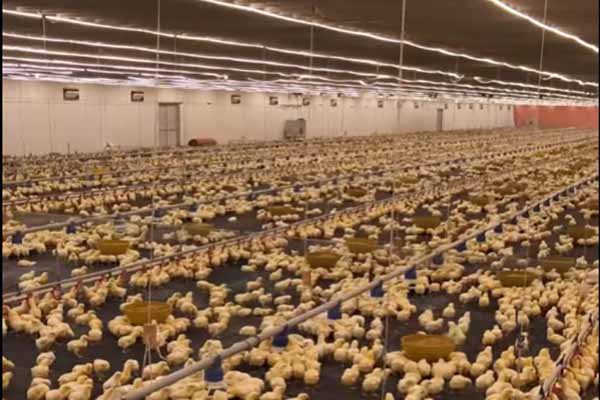Automated Equipment Installation Process for Automated Chicken Farms in Kenya
Time : 2025-06-28
The poultry industry in Kenya is experiencing significant growth, with a particular focus on automated chicken farms. As the industry evolves, the installation of automated equipment has become a crucial step in ensuring efficiency, productivity, and optimal conditions for chicken farming. This article delves into the detailed process of installing automated equipment in chicken farms in Kenya, providing insights into the technical aspects and considerations involved.
Introduction
Automated chicken farms represent a modern approach to poultry production, integrating advanced technology to streamline operations. The installation process of such equipment is not only a technical challenge but also a strategic one, as it can significantly impact the farm’s performance and profitability. In this article, we will explore the key stages of the installation process, from planning to commissioning.
Planning Phase
The planning phase is the cornerstone of a successful automated equipment installation. It involves several critical steps:
1. Needs Assessment
A thorough needs assessment is essential to determine the specific requirements of the farm. This includes evaluating the current capacity, production goals, and growth projections. It is also important to consider the local climate and environmental conditions in Kenya.
2. Equipment Selection
Based on the needs assessment, the next step is to select the appropriate automated equipment. This may include feeders, waterers, lighting systems, environmental control units, and biosecurity systems. It is crucial to choose equipment that is reliable, efficient, and compatible with the farm’s infrastructure.
3. Budgeting
A detailed budget should be prepared, taking into account the cost of equipment, installation, labor, and any potential contingencies. This will help in ensuring that the project remains financially viable.
Design Phase
The design phase involves creating a detailed plan for the installation process. Key considerations include:
1. Layout Planning
The layout of the farm should be designed to optimize the flow of operations and minimize waste. This includes the placement of pens, feeders, waterers, and other equipment.
2. Electrical and Mechanical Design
The electrical and mechanical design must ensure that the equipment operates safely and efficiently. This involves specifying the required voltage, wiring, and insulation, as well as the type of mechanical components needed.
3. Software Integration
Automated chicken farms often require sophisticated software to manage operations. The design phase should include the integration of this software with the hardware to ensure seamless operation.
Installation Phase
The installation phase is where the selected equipment is brought into the farm and set up. Key steps include:
1. Equipment Delivery
Ensure that all equipment is delivered on time and in good condition. This includes checking for any damage or discrepancies during the delivery process.
2. Site Preparation
Prepare the site for installation, which may involve leveling the ground, laying foundations, and setting up temporary power supplies.
3. Equipment Installation
Install the equipment according to the design specifications. This may involve mounting feeders, waterers, and lighting systems, as well as connecting them to the power supply and software.
Commissioning Phase
Once the equipment is installed, the commissioning phase begins. This involves:
1. System Testing
Thoroughly test the equipment to ensure that it operates as intended. This includes checking for leaks, electrical issues, and proper function of all components.
2. Training
Train the farm staff on how to operate and maintain the equipment. This is crucial for the long-term success of the automated system.
3. Final Adjustments
Make any necessary adjustments to optimize performance. This may include fine-tuning the software or adjusting the positioning of equipment.
Maintenance and Upkeep
Regular maintenance and upkeep are essential to ensure the continued operation of automated equipment. Key considerations include:
1. Preventive Maintenance
Implement a preventive maintenance schedule to regularly inspect and service the equipment, reducing the risk of breakdowns.
2. Spare Parts
Keep a stock of spare parts to quickly replace any components that fail.
3. Staff Training
Continuously train staff on the latest maintenance techniques and best practices.
Conclusion
The installation of automated equipment in chicken farms in Kenya is a complex but essential process. By following a systematic approach, including thorough planning, precise design, careful installation, and ongoing maintenance, farms can maximize efficiency and productivity. As the poultry industry continues to evolve, embracing automation will be key to staying competitive.
Tags












